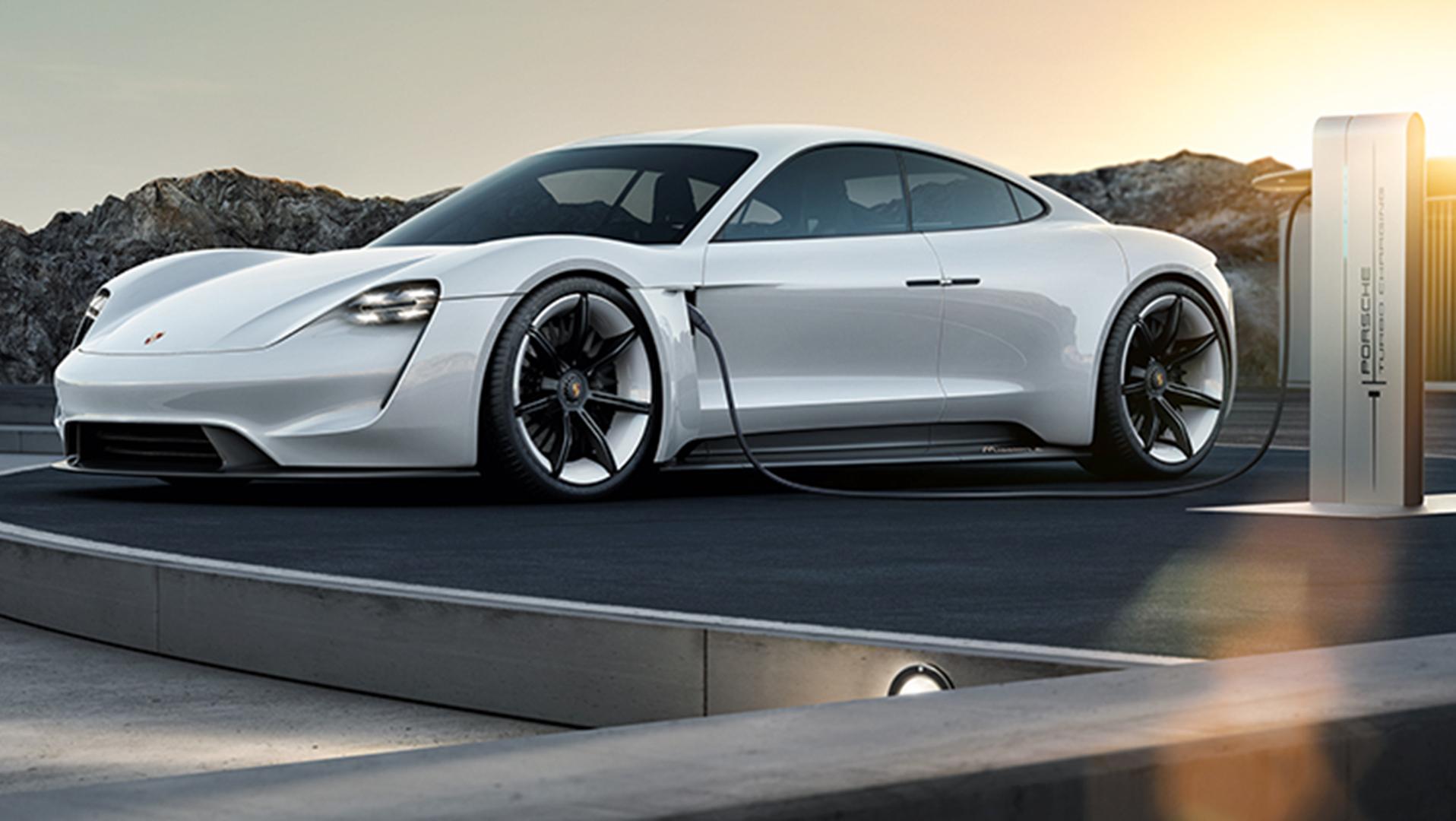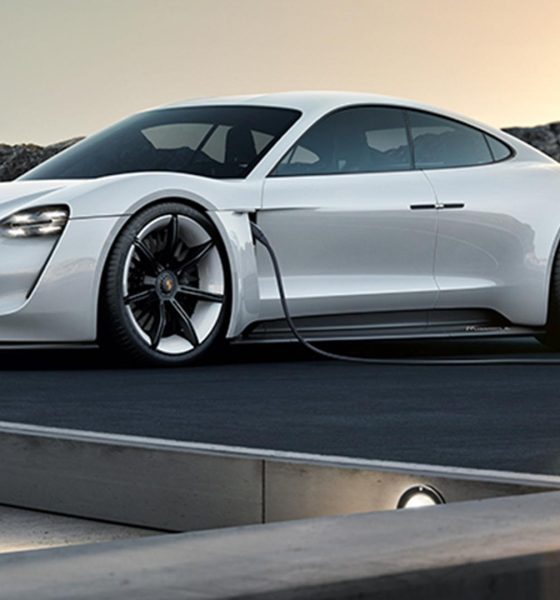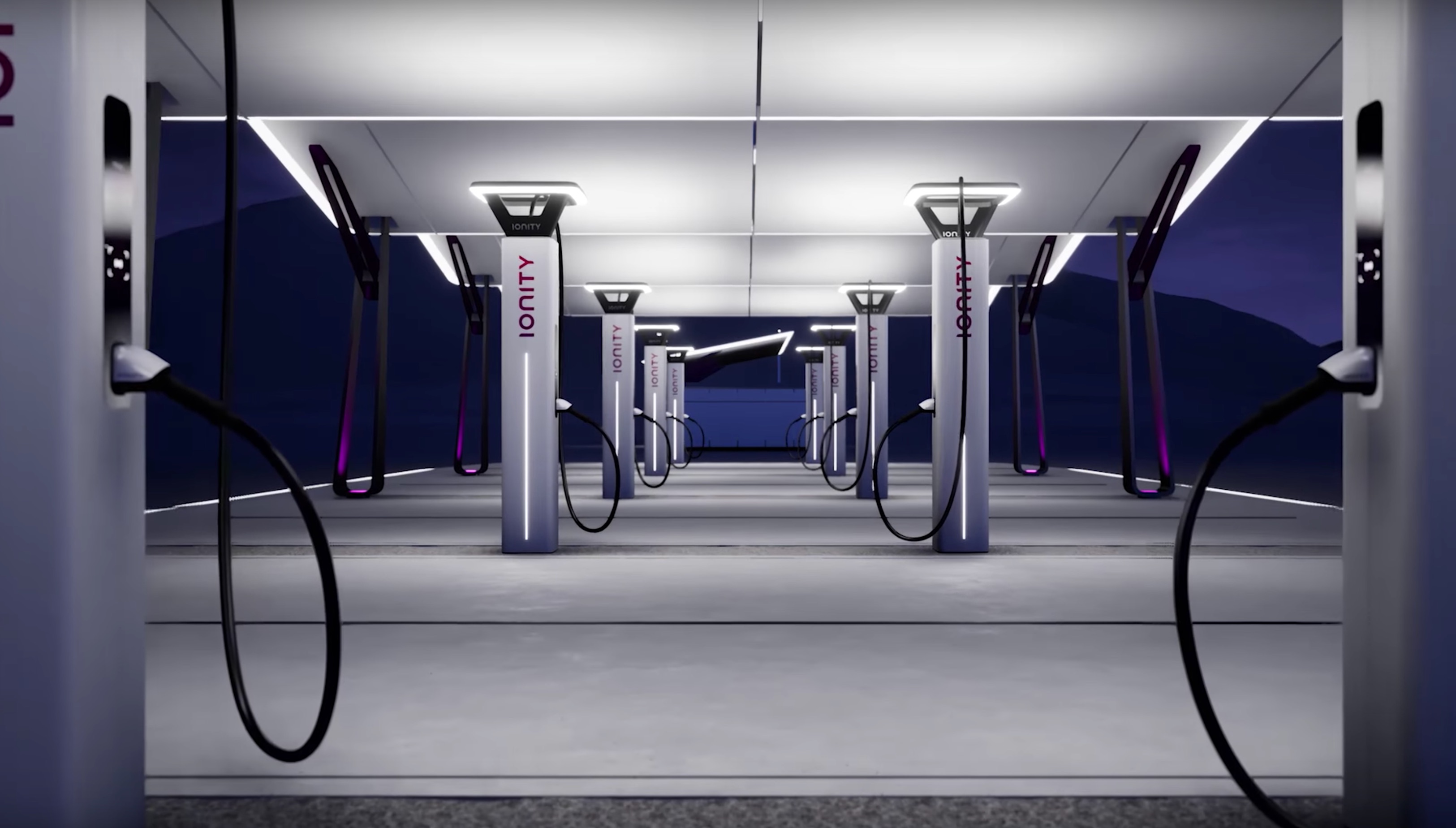

News
Porsche seems to be adapting elements of Tesla’s Supercharger Network for the Taycan
There are several legacy automakers coming up with vehicles designed to compete against Tesla in the premium electric car segment. Among them, the company that appears to be putting the most effort into its EV push is Porsche, as the automaker is now setting the stage for the release of its first all-electric car — the Taycan, formerly known as the Mission E sedan.
Initially unveiled as a stunning concept car at the 2015 Frankfurt Motor Show, the Taycan instantly attracted a lot of attention and interest among electric car enthusiasts. Unlike other car manufacturers like Jaguar and its impressive I-PACE compact SUV (which does not have a dedicated charging infrastructure), Porsche is putting a lot of effort into making sure that the Taycan becomes a viable alternative to gas-powered vehicles when it gets released. One of these initiatives is the IONITY network, an ultra-fast charging solution being developed with other legacy car companies like Volkswagen and BMW.
In a recent update on its official website, Porsche revealed that it would be rolling out its own dedicated fast-charging solution for the Taycan and its other upcoming all-electric vehicles. The article, which involved an interview with Otmar Bitsche, Director of Development Electrics, Electronics, Electromobility at Porsche and Michael Kiefer, Director of High-Voltage Systems at Porsche Engineering, featured some interesting insights into the company’s efforts at developing Charging Parks, a system that does not seem very different from the Supercharger Network being utilized by Tesla.
Bitsche notes that with the current charging systems in the market, “complicated payment modalities and extremely variable energy prices is a real barrier to the acceptance of electromobility.” This creates an inefficient charging system that becomes a nuisance for electric car drivers. Kiefer described Porsche’s solution to this problem in a statement.
“Someone who wants to drive from Munich to Hamburg in an electric vehicle today needs multiple cards with which they have to authenticate themselves at the charging stations. Porsche eliminates this authentication rigmarole for customers by establishing contracts with all of the charging station operators, so the customer only needs one charging card that is accepted everywhere. And they can also count on a guaranteed electricity price that applies throughout the entire country. Customers of the Porsche charging service ultimately receive just one transparent bill from Porsche,” he said.
Porsche’s response to long-distance charging challenges, apart from its participation in the IONITY network, is the Charging Park. Porsche notes that the Charging Park concept is designed to make charging effortless for electric car owners, in the way that they are placed in strategic locations and are available 24/7. The legacy automaker also mentioned the ChargeBox, a charging solution that could be installed in cities and areas that could not accommodate a Charging Park.
“We have invested a great deal of effort in the issue of user-friendliness. Our charging stations even look different than the predominant ones seen today. They aid the customer through a design that guides the cable cleanly. We’ve also designed the overall system for the lowest possible power loss. That pay-off in terms of operating costs and the potential operator of the Park stands to save a lot of money.
“We have two different variants, the Charging Park and the ChargeBox. The Park is designed for locations with more available space in which a very high volume of charges is to be expected, 24 hours a day, seven days a week. With a small compact station, however, a charging park is possible in the city as well, for example in a residential area. For all areas with extreme space constraints, there is our second variant, the ChargeBox with an integrate battery. It can be connected to the normal low-voltage grid and enables fast charging in spite of its compact dimensions.”

In true Porsche style, its electric cars’ charging system is designed for speed. With the Taycan, for example, the complany plans to equip the vehicle with an 800-volt battery optimized for ultra-fast charging. The Taycan could recharge at speeds of up to ~350 kW through the IONITY network and similar systems, far beyond the ~120 kW offered by Tesla’s current-generation Superchargers.
Overall, Porsche’s decision to focus on a charging network to support its upcoming electric vehicles is a strategic move that can pay off in spades. A dedicated charging system, after all, makes a big difference in the ownership experience of electric cars. Model S, X, and 3 owners, for one, would point to the Supercharger Network as one of the biggest benefits of owning a Tesla, considering that the system enables true long-distance travel. With this in mind, it is quite encouraging to see legacy automakers such as Porsche adopting a rather similar concept for their own vehicles.
Porsche expects to start the production of the Taycan to begin sometime in 2019, though pre-orders for the vehicle could now be filed in the United States and other selected territories. Production of the electric car is expected to be held at the company’s Zuffenhausen facility in Stuttgart, Germany, where it manufactures the Porsche 911, 718 Boxster, and the 718 Cayman. The company plans to roll out 20,000 Taycans per year when the vehicle enters production.

News
Tesla FSD fleet is nearing 7 billion total miles, including 2.5 billion city miles
As can be seen on Tesla’s official FSD webpage, vehicles equipped with the system have now navigated over 6.99 billion miles.

Tesla’s Full Self-Driving (Supervised) fleet is closing in on almost 7 billion total miles driven, as per data posted by the company on its official FSD webpage.
These figures hint at the massive scale of data fueling Tesla’s rapid FSD improvements, which have been quite notable as of late.
FSD mileage milestones
As can be seen on Tesla’s official FSD webpage, vehicles equipped with the system have now navigated over 6.99 billion miles. Tesla owner and avid FSD tester Whole Mars Catalog also shared a screenshot indicating that from the nearly 7 billion miles traveled by the FSD fleet, more than 2.5 billion miles were driven inside cities.
City miles are particularly valuable for complex urban scenarios like unprotected turns, pedestrian interactions, and traffic lights. This is also the difference-maker for FSD, as only complex solutions, such as Waymo’s self-driving taxis, operate similarly on inner-city streets. And even then, incidents such as the San Francisco blackouts have proven challenging for sensor-rich vehicles like Waymos.
Tesla’s data edge
Tesla has a number of advantages in the autonomous vehicle sector, one of which is the size of its fleet and the number of vehicles training FSD on real-world roads. Tesla’s nearly 7 billion FSD miles then allow the company to roll out updates that make its vehicles behave like they are being driven by experienced drivers, even if they are operating on their own.
So notable are Tesla’s improvements to FSD that NVIDIA Director of Robotics Jim Fan, after experiencing FSD v14, noted that the system is the first AI that passes what he described as a “Physical Turing Test.”
“Despite knowing exactly how robot learning works, I still find it magical watching the steering wheel turn by itself. First it feels surreal, next it becomes routine. Then, like the smartphone, taking it away actively hurts. This is how humanity gets rewired and glued to god-like technologies,” Fan wrote in a post on X.
News
Tesla starts showing how FSD will change lives in Europe
Local officials tested the system on narrow country roads and were impressed by FSD’s smooth, human-like driving, with some calling the service a game-changer for everyday life in areas that are far from urban centers.

Tesla has launched Europe’s first public shuttle service using Full Self-Driving (Supervised) in the rural Eifelkreis Bitburg-Prüm region of Germany, demonstrating how the technology can restore independence and mobility for people who struggle with limited transport options.
Local officials tested the system on narrow country roads and were impressed by FSD’s smooth, human-like driving, with some calling the service a game-changer for everyday life in areas that are far from urban centers.
Officials see real impact on rural residents
Arzfeld Mayor Johannes Kuhl and District Administrator Andreas Kruppert personally tested the Tesla shuttle service. This allowed them to see just how well FSD navigated winding lanes and rural roads confidently. Kruppert said, “Autonomous driving sounds like science fiction to many, but we simply see here that it works totally well in rural regions too.” Kuhl, for his part, also noted that FSD “feels like a very experienced driver.”
The pilot complements the area’s “Citizen Bus” program, which provides on-demand rides for elderly residents who can no longer drive themselves. Tesla Europe shared a video of a demonstration of the service, highlighting how FSD gives people their freedom back, even in places where public transport is not as prevalent.
What the Ministry for Economic Affairs and Transport says
Rhineland-Palatinate’s Minister Daniela Schmitt supported the project, praising the collaboration that made this “first of its kind in Europe” possible. As per the ministry, the rural rollout for the service shows FSD’s potential beyond major cities, and it delivers tangible benefits like grocery runs, doctor visits, and social connections for isolated residents.
“Reliable and flexible mobility is especially vital in rural areas. With the launch of a shuttle service using self-driving vehicles (FSD supervised) by Tesla in the Eifelkreis Bitburg-Prüm, an innovative pilot project is now getting underway that complements local community bus services. It is the first project of its kind in Europe.
“The result is a real gain for rural mobility: greater accessibility, more flexibility and tangible benefits for everyday life. A strong signal for innovation, cooperation and future-oriented mobility beyond urban centers,” the ministry wrote in a LinkedIn post.
News
Tesla China quietly posts Robotaxi-related job listing
Tesla China is currently seeking a Low Voltage Electrical Engineer to work on circuit board design for the company’s autonomous vehicles.

Tesla has posted a new job listing in Shanghai explicitly tied to its Robotaxi program, fueling speculation that the company is preparing to launch its dedicated autonomous ride-hailing service in China.
As noted in the listing, Tesla China is currently seeking a Low Voltage Electrical Engineer to work on circuit board design for the company’s autonomous vehicles.
Robotaxi-specific role
The listing, which was shared on social media platform X by industry watcher @tslaming, suggested that Tesla China is looking to fill the role urgently. The job listing itself specifically mentions that the person hired for the role will be working on the Low Voltage Hardware team, which would design the circuit boards that would serve as the nervous system of the Robotaxi.
Key tasks for the role, as indicated in the job listing, include collaboration with PCB layout, firmware, mechanical, program management, and validation teams, among other responsibilities. The role is based in Shanghai.
China Robotaxi launch
China represents a massive potential market for robotaxis, with its dense urban centers and supportive policies in select cities. Tesla has limited permission to roll out FSD in the country, though despite this, its vehicles have been hailed as among the best in the market when it comes to autonomous features. So far, at least, it appears that China supports Tesla’s FSD and Robotaxi rollout.
This was hinted at in November, when Tesla brought the Cybercab to the 8th China International Import Expo (CIIE) in Shanghai, marking the first time that the autonomous two-seater was brought to the Asia-Pacific region. The vehicle, despite not having a release date in China, received a significant amount of interest among the event’s attendees.








